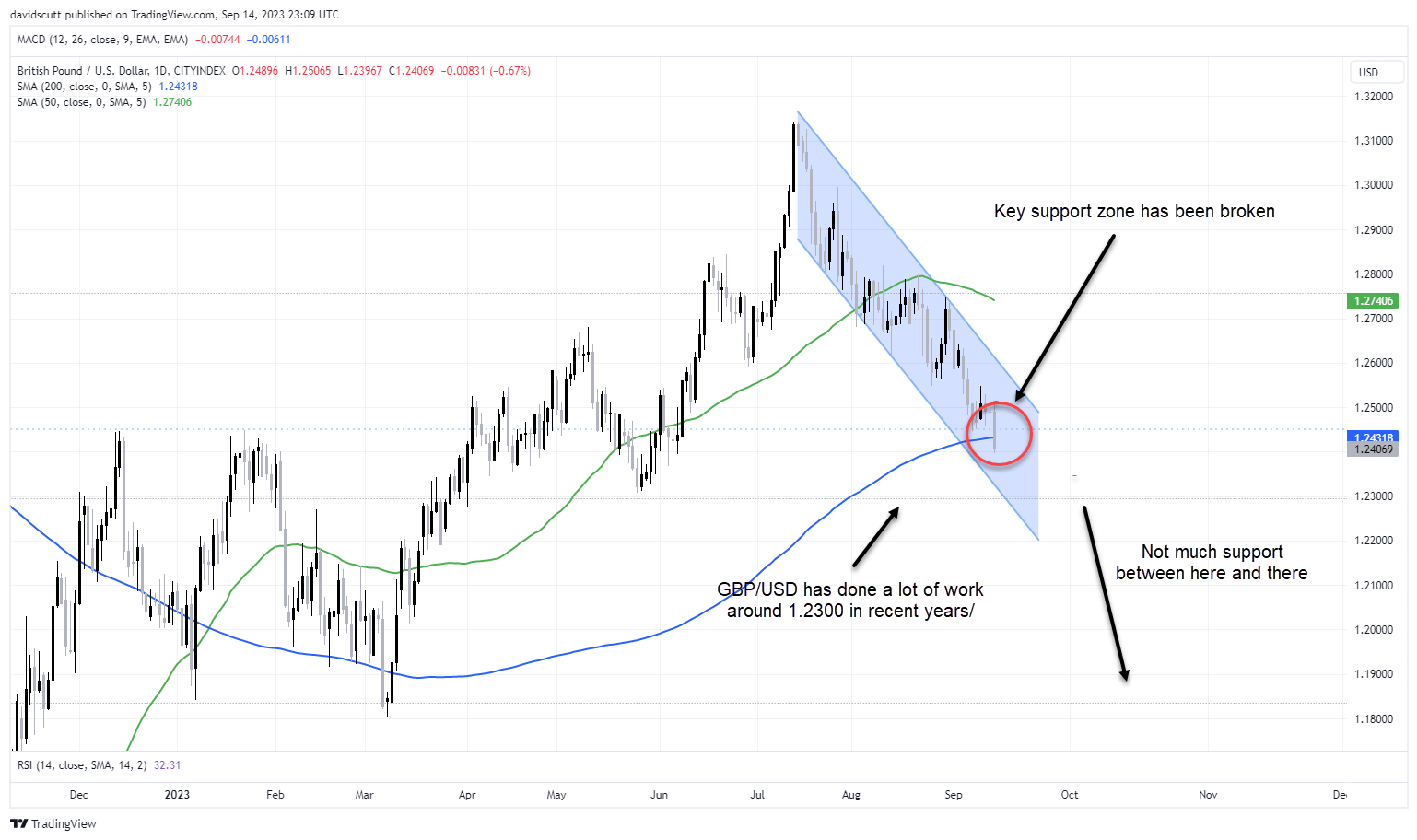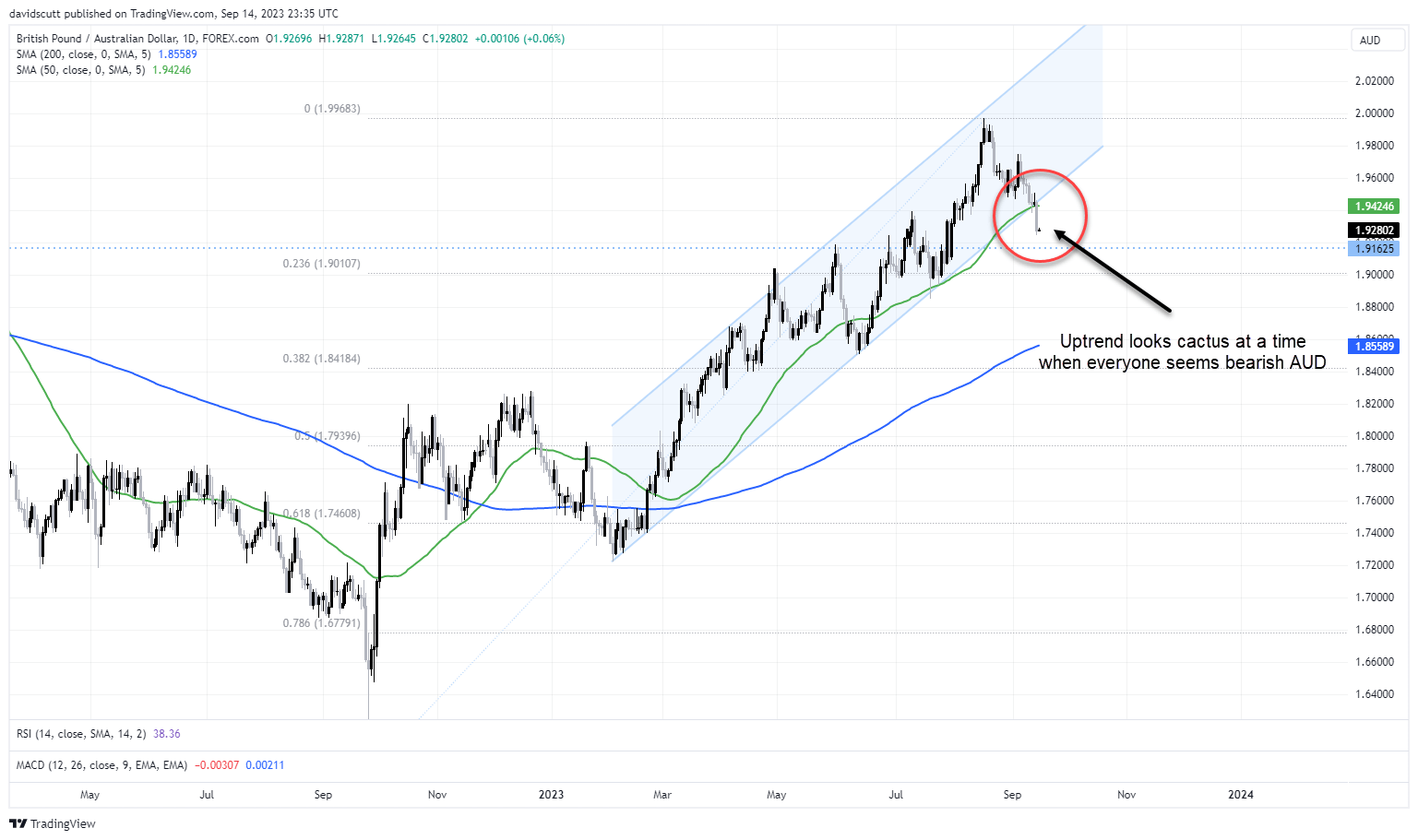The British pound has looked healthier on the charts, closing below a key support zone on Thursday, signaling the potential for weakness to intensify ahead. And that’s before we even get to deteriorating fundamentals.
GBP/USD looks terrible on the charts
Technically, GBP/USD looks terrible. It’s broken key support at 1.2450 and the 200-day MA, closing at the lowest level since June. Given the significance of this zone, the case for further downside is strong, pointing to a likely test of 1.2300, the intersection of the 50% retracement of the 2021-2022 high-low and the lower bound of the downtrend it’s been stuck in sine July. Below that, there’s not a lot of support until you get to 1.1840, the 38.2% Fibonacci retracement of the 2021-2022 high-low. A stop above 1.2450 will help to limit losses should the break prove to be a head fake. RSI is approaching oversold levels, so that’s one indicator to keep an eye on.

Fundamentals add to GBP downside risks
Fundamentally, it’s easy to see why downside risks are growing for the pound. The US economy is looking more than resilient, destroying recession forecast after recession forecast, largely because of ongoing strength in the labour market.
Contrast that to what’s going on in Europe where stagflation risks look to be building. The ECB said it was done hiking rates on Thursday, pointing to the risk the Bank of England does the same next week given similarities in economic conditions to those seen on the continent. It’s like chalk and cheese. The US dollar is a beacon of light in an otherwise gloomy G10 FX forest.
GBP/AUD breaks uptrend in dramatic fashion
The buck is not the only currency GBP is looking vulnerable against. Take the Australian dollar, for example. It’s been the whipping boy of currency markets for months, used as a proxy to express pessimism towards what’s happening in China. But with sentiment and expectations towards China already so low, and with authorities already acting to stabilise economic activity, the directional risks for AUD are now arguably to the upside.
Look at the GBP/AUD daily chart. It’s broken out of the uptrend that began earlier this year when China reopening optimism started to wane. It’s also cut through the 50-day MA like a hot knife through butter, a level it’s respected numerous times in the recent past. Talk about potential downside risks!
Support located above 1.9150 is the first port of call on the downside. Beyond that, the Fib retracement at 1.9000 looms large.
